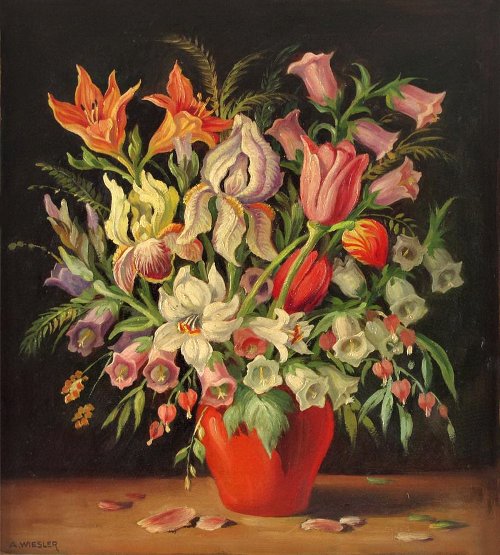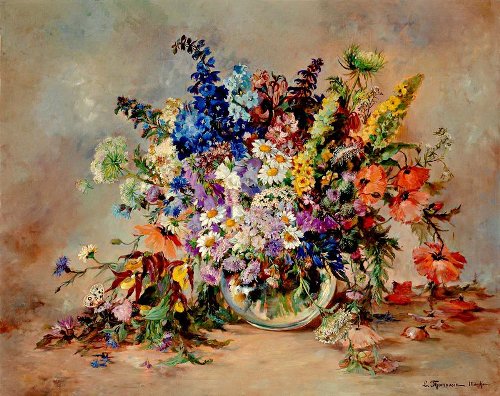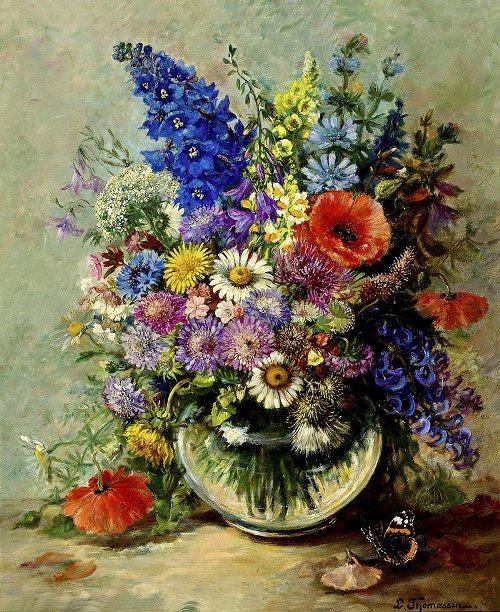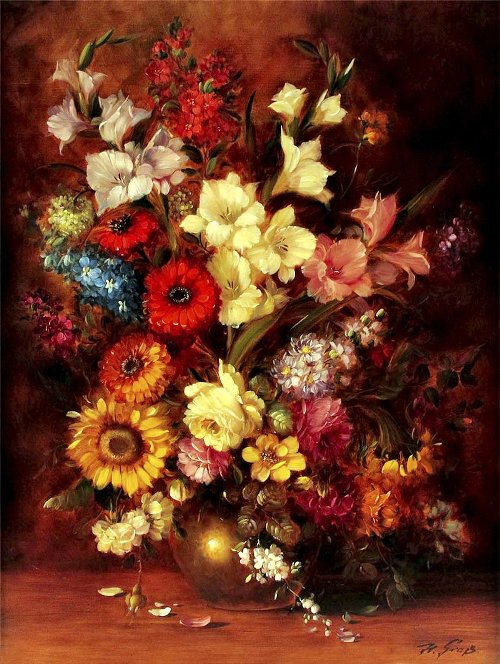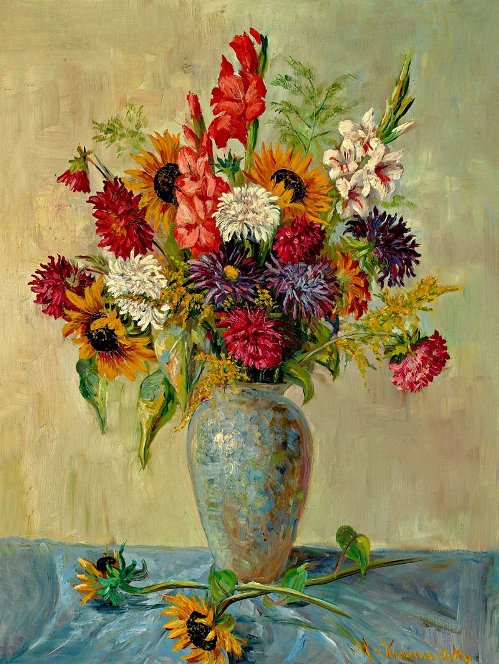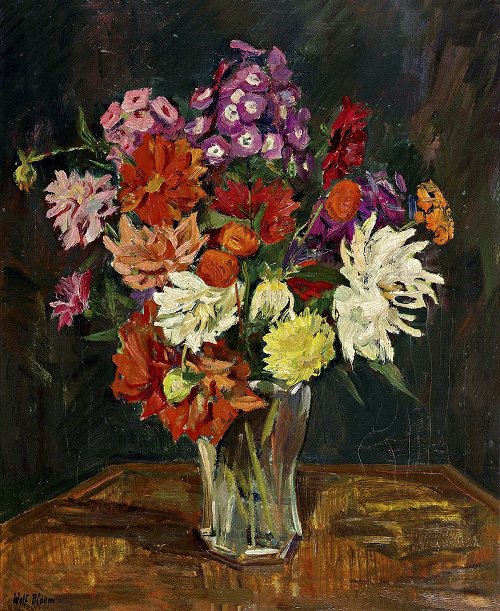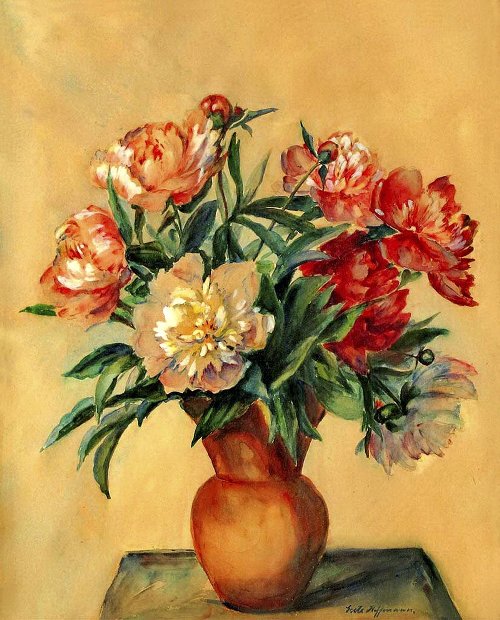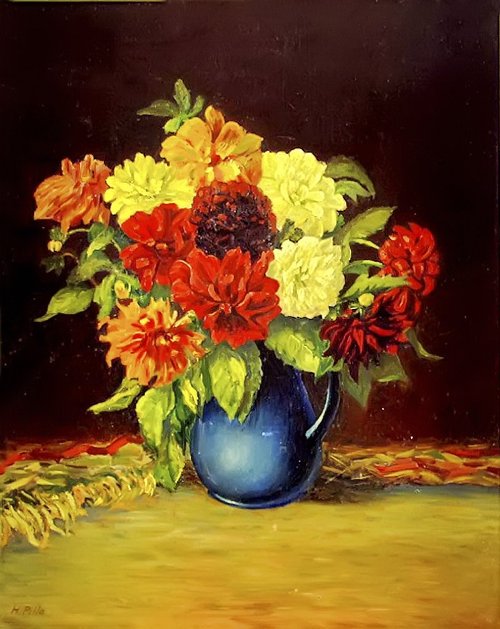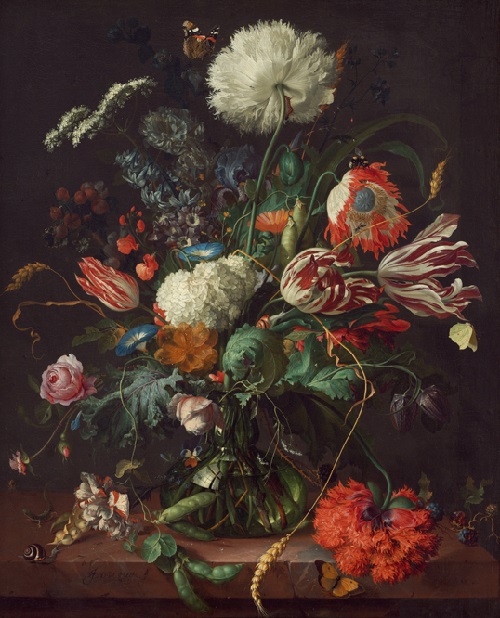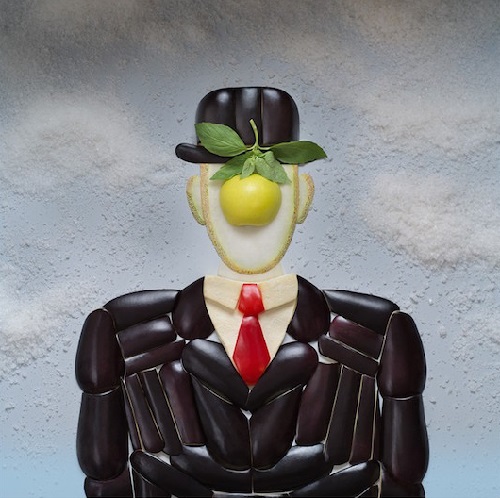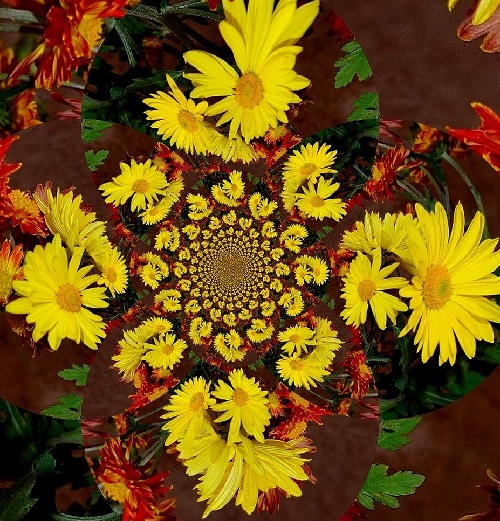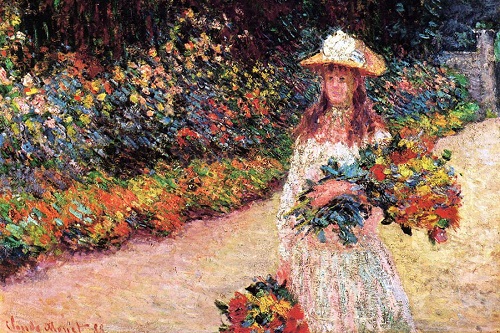Flower paintings
The Dutch prized flowers and flower paintings, flowers were appreciated for beauty and fragrance and not simply for their value as medicine, herbs, or dye-stuffs. Exotic new species from around the globe were avidly sought by botanists and gardeners. Paintings immortalized these treasures and made them available to study — and they gave sunny pleasure even in winter. Viewers could see almost touch and smell the blossoms. In 1646 a Dutch poet extolled the beauty of a flower picture and its fragrance: “our eyes wander in the flower, and also its fragrance permeates more than musk.”
Still-life painting demands imagination, artifice. Here are blossoms that appear at different times of the year. This arrangement of peonies and roses, poppies and cyclamen not only reflects the wonders of nature’s creations but also something of the artist’s making. The artist manipulates the forms: exaggeratedly long stems allow for a more dynamic composition, and the dark background intensifies his color.
These painted bouquets outlast nature, and permanence is argued by theorists to be one of art’s fundamental virtues. By contrast, caterpillars and tiny ants that eat away at leaves and flowers, petals that begin to wither, flower heads that droop — all remind us of the brevity of life.
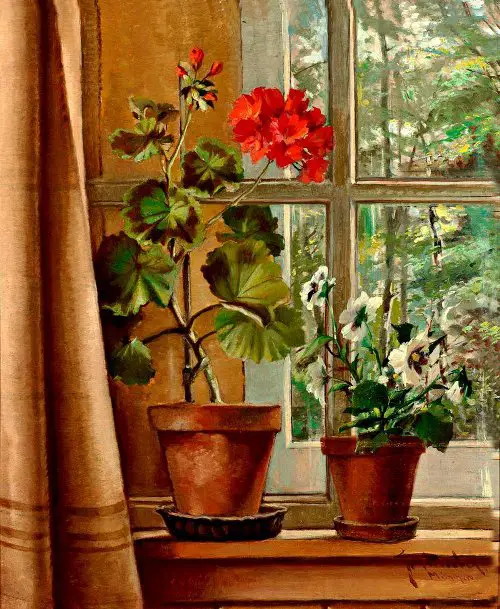
Munich artist of the first half of the 20th century. Geraniums and pansies on a window sill with forest views. Oil painting board
De Heem’s bouquet seems to make symbolic reference to Christ’s resurrection and man’s salvation. In addition to the cross-shaped reflection of a mullioned window in the glass vase, there are other signs. A butterfly, often associated with the resurrection, alights on a white poppy, a flower linked with sleep, death, and the Passion of Christ. A sweeping stalk of grain may allude to the bread of the Eucharist. Morning glories, which open only during the day, may represent the light of truth, while brambles may recall the burning bush signaling God’s omnipresence to Moses. Perhaps not every viewer would “see” these meanings, but they were certainly intended by the artist. Dutch painting is not an ordinary mirror of the world. Bouquets such as De Heem’s address the meaning of life, the nature of art, and the bounty of God’s creation.
sources:
Michael Zeller auction
arcadja.com/auctions/
nga.gov/kids/DTP6stillife.pdf

